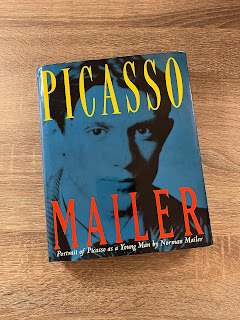Picasso as an Overly Sexualized Bohemian
One day, when wandering the streets of my neighborhood, I noticed a book sitting on the steps of a house on my street. Attached to the front of the book was a post-it note which read, "FREE." Out of sheer curiosity I picked up the book, and upon removing the sticky note I discovered that the free book in question was a biography of none other than Picasso himself. I decided to take Norman Mailer's Portrait of Picasso as a Young Man home, and hopefully discover more about an artist who has long fascinated me.
At first I quite enjoyed the book. Mailer provided a variety of interesting anecdotes about Picasso's childhood in Spain, which also brought back fond memories of my time in the country, during which I was able to visit the childhood home of the famous painter mentioned in the book.
As the book followed Picasso's journey into young adulthood however, the book took an oddly sexual turn. I had known Picasso to be somewhat of a womanizer, but Mailer went into occasionally graphic detail about the painter's sex-life, which led to occasional tangents that seemed to have little to no relevance to the the overall biographical focus of the book itself. Numerous erotic paintings and sketches made by Picasso are included throughout the book, almost to an excessive degree.
Moreover, several chapters are dedicated to the backstories of Picasso's various lovers and friends, to the point where the book seems less like a biography of the painter and more like an expose on the sex lives and scandals of early-20th-century bohemians in Paris. While some of these stories are interesting, they stray heavily from the purported focus of the book, which is Picasso's early life.
Aside from the lack of topical focus throughout the book, there are some interesting chapters here and there that explain the evolution of Picasso's artistic style, but even here Mailer's portrayal of these events reads more like a literature review, as he regularly quotes from other scholars rather than offering his own biographical interpretation.
As a longtime fan of Picasso's art, I was overall disappointed by the contents of this book. Unless you appreciate erotic sketches and the bizarre overuse of the word "brouhaha," I would suggest leaving this book on your neighbor's doorstep.




Comments
Post a Comment